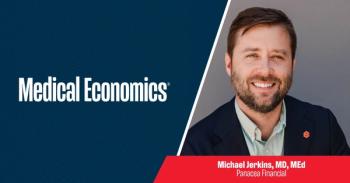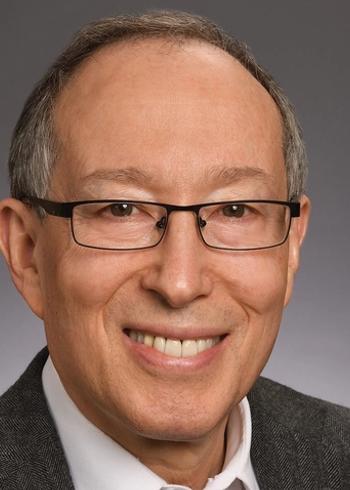
Primary care ‘reaching a breaking point,’ experts say
Scorecard has bad marks for health care system that devotes rhetoric and attention — but not money — to primary care.
While primary care physicians provide good treatments for their patients, primary care is not getting the treatment it needs from the health care system at large.
That’s no surprise, said experts who analyzed the new report,
On Feb. 18, the organizations convened an online panel to discuss
They agreed that, at first look, the scorecard affirms what so many physicians and other clinicians know: The state of primary care is going from bad to worse.
The weakening spine of health care
Primary care is the spine supporting all the whole skeleton and organ systems of the American health care system, said Hollister.
“Our bone density is rapidly declining, and our health care system is developing osteoporosis,” he said. “A vertebral body fracture is imminent, which could lead to devastating and expensive results. Primary care needs an urgent infusion of nutrients and attention to prevent this needless occurrence.”
Hollister described his own experience as a family physician in Colorado Springs, Colorado. Since starting his practice, the health care landscape has shifted. He said his practice must deal with staff shortages, inflation, declining Medicare reimbursement, suffocating administrative challenges, more patients with multiple chronic diseases, and expensive and inadequate
“Primary care plays a critical role in moving our healthcare system toward a greater focus on disease prevention by fostering ongoing patient clinician relationships,” he said. “Primary care can offer personalized, comprehensive care that addresses the multifaceted needs of patients with chronic conditions or precursors to them. This approach not only improves disease management, but helps reduce the incidence and severity of chronic diseases.”
Getting worse, not better
Kenen asked the panelists about results most striking to them.
While it appears things may be getting better for primary care, actually things are getting worse, Talamantes said.
There have been so many advances in prevention, screenings and detection in primary care, but patients can’t get to them. There were hopes that advanced practitioners such as nurse practitioners and physician associates would fill in coverage gaps, but they are leaving primary care. Physicians and other clinicians are fatigued and there is no healthy pipeline to reinforce them with new clinicians, he said.
“And what this means for the state of California, for the whole country — I mean, millions of patients are being impacted,” Talamantes said.
Validating what’s wrong
Jabbarpour presented the findings for the group. The results were validating, but not in a good way, she said.
“Validating may be the wrong word, but as a primary care physician, I'm noticing that it's getting harder and harder to do this, and my patients in (Washington) D.C. are waiting longer and longer to see me, even though I'm working harder and harder,” she said. “And so to see the data kind of explain why that's happening, I think, was validating. Not good news for primary care, not good news for patients, but validating.”
‘Reaching a breaking point’
Tripoli agreed the latest scorecard piles onto the evidence that primary care, the first line of defense against illness and for wellness, is in crisis. There is lots of data and some glimmers of hope for policy reforms around the edges of health care. But there has been no sweeping policy reforms as doctors and the entire health care workforce are understaffed, overworked, and underappreciated, she said.
“And the question is, how long can they sustain that?” Tripoli said. “And I think we're seeing the scorecard validates that we're reaching a breaking point. People are walking away from the workforce because they simply cannot sustain and so this is urgent. This is a very urgent situation, and we do need the whole community to step up right now and really make sure that policymakers understand the urgency of what faces the system.”
A reflection of the system
The scorecard is a mirror that reflects exactly the chaos withing the health care system, Bitton said. There has been rhetoric and attention devoted to primary care, but the dollars don’t follow, he said.
The treatment is not simple, Bitton said, but it is clear.
“It's changing the form, the level and the flow of dollars to primary care. And the report makes that abundantly clear, when that doesn't happen, we get exactly the results that we see. We shouldn't be surprised by them,” Bitton said.
“And it's not that it's only a question of money, but the question starts with money and then gets to other important issues. So, to me, in sum, it underscores, primary care cannot be thought of as a charity case in the corner that's just going to get better on its own, passively and osmotically. Change needs to happen at organizational, local, state, federal levels, to either bring that rhetoric into action or to just call BS on the whole thing and say, ‘Why would you think that the scorecard would change if nothing really is changing?’”
Losing other clinicians
One surprising finding was that NPs and PAs, clinicians who are not doctors, are leaving primary care, Kenen said. “What I thought was, OK, this is one of the few things that’s moving in the right direction, and I was wrong,” she said.
Kenen called the results “disturbing,” although one finding about electronic health records was not a surprise.
“The only thing that didn’t surprise me in this report is that everybody still hates their EHRs,” she said.
Newsletter
Stay informed and empowered with Medical Economics enewsletter, delivering expert insights, financial strategies, practice management tips and technology trends — tailored for today’s physicians.














